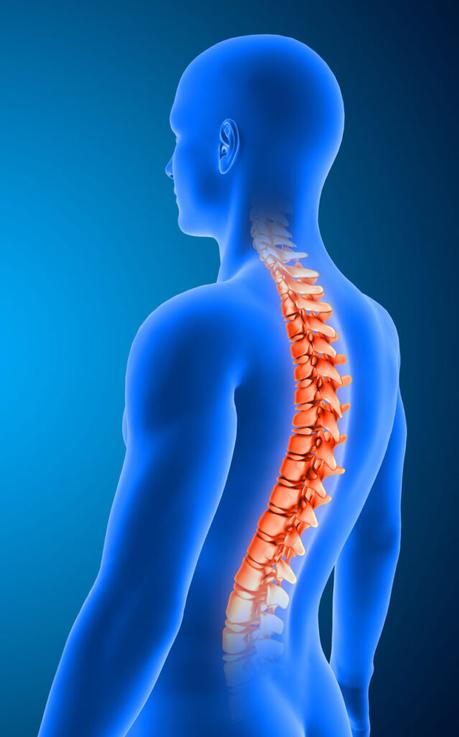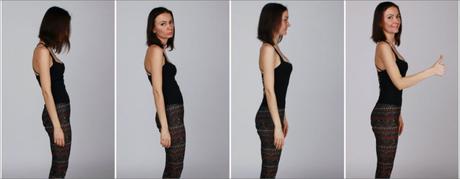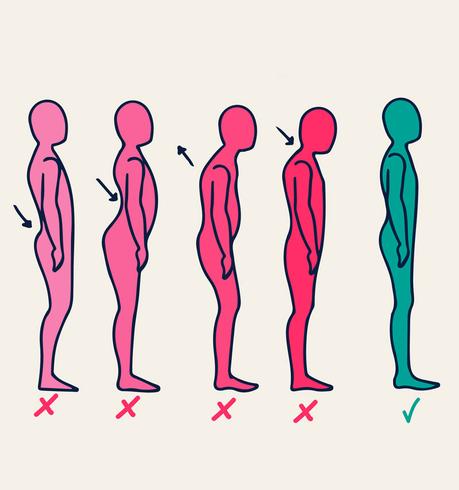Posture Dysfunction and Flexion Dysfunction Exercises
today what I’m going to discuss is something called flexion dysfunction. For those therapists listening, you’ll understand right away what it is.
For those of you who have never heard of the term, flexion dysfunction is something that occurs when you’ve been so immaculate about keeping your back in extension or its safe alignment that when you do go into flexion, it causes discomfort. So we call it a flexion dysfunction because you get tight going into flexion.
We’re not advocating that you incorporate the movements that we have identified as unsafe, where there’s the weight of your head and the weight of the shoulders and all of the activities of daily living. But we are advocating that you do some flexion in unweighted positions, be it in the water, be it lying on your side, where you’re allowing your spine to get into its full range of flexion and extension.
The extension you’ve probably incorporated in your life but it’s a full range of flexion so that you don’t get tight into flexion and don’t develop a flexion dysfunction.

Does "Poor" Posture Lead To Pain?
Many healthcare providers suggest that patients work on their poor posture to prevent or eliminate their back pain. In our practice, we regularly see people who are worried as they’ve been told that lumbar lordosis, rounded shoulders, scoliosis, etc. are a problem that needs fixing, but it is justified. Although there are some exceptions to the rule, the great bulk of studies shows no association between them. Let’s look at the evidence to answer whether there is an association between pain and posture.
- Leg length difference and back pain
- Degree of lumbar lordosis and back pain
- Neck curvature and neck pain
- Pelvis tilt, length of ABS, hamstrings, and iliopsoas muscles and low back pain
- Postural asymmetry in teenagers and future back pain in adulthood
- Increased lumbar lordosis in pregnant women and the development of back pain
As a summary, a systematic review by Christiansen in 2008 including 54 studies then also concluded that an association between sagittal spinal curves and health including spinal pain is not supported .even if these correlational studies showed an association it would not prove a causal relationship which needs a prospective study design. It may then be that people in pain have adopted a different posture due to the pain instead of the other way around.

How Poor Posture Causes Pain
We are a myth that it seems plausible that poor posture leads to pain due to mechanical overload on certain areas resulting in accumulated micro-damage.
but there are a couple of reasons why this idea is flawed
1. tissues adapt to stress
human bodies are not machines that wear out over time. Instead, the human body, including its joints, ligaments, tendons, intervertebral discs, and muscles, can adapt to cope with the load that is placed upon them. This is probably also the reason we even weight lifters can get away with considerable degrees of lumbar or thoracic flexion during a deadlift, as they have probably adapted to the load gradually over time.
2. tissue damage does not equal pain
even if poor posture led to accumulated micro-damage like proposed in the term repetitive strain injury or RSI, many people with tissue damage seen on imaging without any pain.
A lot of studies are showing that there is a very high chance of finding abnormalities on MRI. Its knees, shoulders, necks, and backs in perfectly healthy subjects at a certain age. So while tissue damage is a contributor to pain, pain is far more complex and linked to many more factors.
3. natural variation
every person is different, and it’s impossible to talk about one ideal posture. Asymmetries are rather than normed than the exception and a person’s Anatomy then dictates the optimal way for this person to move. A movement pattern that might be labelled dysfunctional in one person might be perfectly fine for another person. We have received quite a lot of comments on the fact that my right shoulder is hanging down quite a bit due to the surgery I had about 15 years ago. My shoulder doesn’t need any fixing or training. I can get benchpress barbell press heavy without any problems and experience some pain in my left shoulder at the moment, although the left one looks perfectly fine from the outside.
5 Ways Poor Posture Affects Health
Bad posture does more than make your back and neck mad at you. Here are other ways it can hurt your health over time.
1. Less space for lunges, diaphragm
Slouching in your seat gives your lungs and diaphragm less room to do their things, which makes it harder for you to breathe.
2. Compresses organs in the belly
Organs in your belly, like your intestine, may also get cramped for space, affecting how well they function.
3. Head just forward
if you let your head jut forward; a joint in your jaw could become painfully overworked.
4. Stooping at waist
If you stoop forward at the waist when you walk, your knee could end up feeling sore.
5. Bad posture tied to negative thoughts
some researchers even link poor posture to slumps in the mood. Sitting or standing up straight, they say, and it may help you think positively.
So you keep your head up, literally. And when you are on the move, keep your shoulders back, pull your core in, and keep your knee slightly bent. Your body will thank you.

Compensation Patterns
If we take this further, how is an event like the Paralympics even possible? Although they show incredible compensations in posture and movement patterns, these people perform at the absolute highest level. So it’s about time we stop blaming poor posture for pain. Expectation greatly influences physiological functions and pain, and we are creating no C bows if we are telling a patient about his postural flaws. We believe that we see more patients in our clinic who experience low back pain because they are trying to siting straight all the time and are afraid to slouch than patients, who were generally labelled as having a bad posture. The problem in these patients is probably that they remain in the same posture for a prolonged time and lack movement variation, which is also observed in a study by bonjour Badal in the year 2019. This might lead to worrying and hyper-vigilance and is likely to sensitize them.
Exercises for Posture Dysfunction And Flexion Dysfunction
Flexion dysfunction is a condition where the lumbar spine has limited or painful flexion movement, which is the ability to bend forward.
This can be caused by various factors, such as tight or weak muscles, joint stiffness, poor posture, or previous injuries. Flexion dysfunction can lead to low back pain, sciatica, or other problems.
One of the ways to treat flexion dysfunction is to perform exercises that improve the flexibility and strength of the lumbar spine and the surrounding muscles.
These exercises can help restore normal range of motion, reduce pain, and prevent further injury.


Flexion Exercises for Low Back Pain
Here are some examples of flexion exercises for low back pain:
Pelvic Tilt
This exercise helps to activate the abdominal and pelvic floor muscles, which support the lumbar spine.
To do this exercise, lie on your back with your knees bent and your feet flat on the floor. Place your hands under your lower back and feel the natural curve of your spine.
Then, gently flatten your lower back against your hands by tilting your pelvis backward. Hold this position for a few seconds, then relax and return to the starting position.Pelvic Raises
This exercise helps to strengthen the gluteal and hamstring muscles, which extend the hip and stabilize the pelvis. To do this exercise, lie on your back with your knees bent and your feet flat on the floor.
Then, lift your hips off the floor until your body forms a straight line from your shoulders to your knees. Squeeze your glutes at the top and hold for a few seconds, then lower your hips slowly to the starting position.Belly-Button Retraction
This exercise helps to activate the transverse abdominis muscle, which is the deepest layer of the abdominal wall and acts as a natural corset for the spine.
To do this exercise, lie on your back with your knees bent and your feet flat on the floor. Place your fingers on your lower abdomen, just inside your hip bones.
Then, gently draw your belly button inward toward your spine without holding your breath or moving your pelvis. You should feel a slight tension under your fingers.Single Knee to Chest
This exercise helps to stretch the lower back and hip muscles, which can improve flexion mobility and relieve pain.
To do this exercise, lie on your back with both legs straight. Then, bring one knee toward your chest and hug it with both hands.
You should feel a gentle stretch in your lower back and hip. Hold this position for 20 seconds, then switch legs and repeat on the other side.Both Knees to Chest
This exercise helps to stretch the entire lower back and pelvic region, which can improve flexion mobility and relieve pain. To do this exercise, lie on your back with both legs straight.
Then, bring both knees toward your chest and hug them with both hands. You should feel a gentle stretch in your lower back and pelvis.Curl-Ups
This exercise helps to strengthen the rectus abdominis muscle, which is the superficial layer of the abdominal wall and flexes the spine.
To do this exercise, lie on your back with one leg bent and one leg straight. Place your hands behind your head and keep your elbows wide.
Then, lift your head and shoulders off the floor by curling up your upper body without pulling on your neck or rounding your lower back.
Hold this position for two seconds, then lower yourself slowly to the starting position.Rifle Bolts
This exercise helps to improve spinal rotation mobility and coordination, which can enhance flexion movement and function.
To do this exercise, lie on your back with both knees bent and both feet flat on the floor.
Place a small pillow or towel under your head for support. Then, cross both arms over your chest and keep them close to your body.
Rotate your head to one side while rotating both knees to the opposite side as far as you can without lifting either shoulder off the floor.
You should feel a gentle twist in your spine. Hold this position for two seconds, then return to the center and repeat on the other side.
Remember to start slowly and gradually increase the intensity and duration of the exercises as you progress.
Also, stop any exercise that causes pain or discomfort and consult with a medical professional if you have any questions or concerns.

